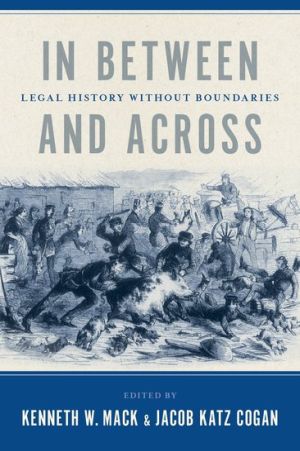
The boundaries between the history of law and the history of everything else are quite blurry nowadays. Whether one is asking questions about the origins of the carceral state, the relationship between slavery and capitalism, the history of migration flows and empires, the longer story of human rights, the building of the straight state, the role of religion in public life, or many others, there is a shared belief that law and its history matters. In fact, legal historians began to focus on the blurring of boundaries such as those between markets and politics, between identity and state power, as well as between national borders and the flows of people, capital and ideas around the world.
Legal history, broadly conceived, seems to mark much of the most exciting work that is redrawing the boundaries of historical scholarship in many areas of study. In Between and Across: Legal History without Boundaries gathers some of the newest and freshest work by both younger and established scholars who are carrying forward that project and extending it into new areas of historical inquiry. It captures the best of the new and innovative tools and questions that have made law a central plane of inquiry, charts novel directions for the field, and poses broader questions concerning the past, present, and future.
Crossing a wide variety of geographic areas (from British-ruled Australia to colonial India and Malaysia, to the United States), the authors sketch new boundaries for the field to cross - boundaries of time, geography, and method - and claim that legal history provides the language to talk across national borders.